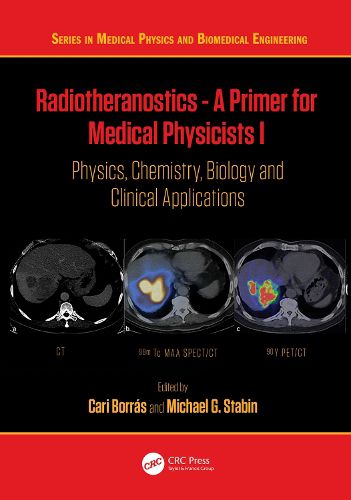Readings Newsletter
Become a Readings Member to make your shopping experience even easier.
Sign in or sign up for free!
You’re not far away from qualifying for FREE standard shipping within Australia
You’ve qualified for FREE standard shipping within Australia
The cart is loading…






This book covers scientific, clinical, and educational aspects of radiotheranostics in cancer control. Setting the framework, the first volume defines radiotheranostics and describes the history of radionuclide therapy and theranostics, and the biology of cancer. It examines the clinical applications of unconjugated radionuclides, such as (1) (3) (1)I and (2) (2) (3)Ra, and of radionuclide-conjugated cancer-specific vectors: peptides, small molecules, antibodies, and nanoparticles; introduces clinical trials and drug development; and reviews epidemiological studies and the adverse effects of radionuclide therapy - both radiation injuries and chemical toxicity. It presents the chemistry and physics of radionuclide production, discusses radioactivity measurements and traceability, and addresses important instrumentation aspects: calibration, quantitative imaging, and quality control. Volume I concludes with guidance on the education, training, and competence of a radiotheranostic multidisciplinary team and summarizes the principal physics characteristics of theranostics today - including many to be expanded in the second volume - while offering a glimpse into tomorrow. This volume provides the foundations for the more advanced second volume, which explores dosimetric and radiation safety, aiming to empower medical physicists and demonstrate to the cancer community how to improve cancer control and yield increased patient survival times.It will be a valuable reference for medical and health physicists with basic knowledge of nuclear medicine.
Key Features
Provides a comprehensive introduction to the topic, presenting readers with thorough treatment in a cohesive two-volume book Presents a rigorous approach while remaining accessible to students and trainees in the ?eld Contains consistent and extensive references to allow readers to delve deeper into the subject
$9.00 standard shipping within Australia
FREE standard shipping within Australia for orders over $100.00
Express & International shipping calculated at checkout
This book covers scientific, clinical, and educational aspects of radiotheranostics in cancer control. Setting the framework, the first volume defines radiotheranostics and describes the history of radionuclide therapy and theranostics, and the biology of cancer. It examines the clinical applications of unconjugated radionuclides, such as (1) (3) (1)I and (2) (2) (3)Ra, and of radionuclide-conjugated cancer-specific vectors: peptides, small molecules, antibodies, and nanoparticles; introduces clinical trials and drug development; and reviews epidemiological studies and the adverse effects of radionuclide therapy - both radiation injuries and chemical toxicity. It presents the chemistry and physics of radionuclide production, discusses radioactivity measurements and traceability, and addresses important instrumentation aspects: calibration, quantitative imaging, and quality control. Volume I concludes with guidance on the education, training, and competence of a radiotheranostic multidisciplinary team and summarizes the principal physics characteristics of theranostics today - including many to be expanded in the second volume - while offering a glimpse into tomorrow. This volume provides the foundations for the more advanced second volume, which explores dosimetric and radiation safety, aiming to empower medical physicists and demonstrate to the cancer community how to improve cancer control and yield increased patient survival times.It will be a valuable reference for medical and health physicists with basic knowledge of nuclear medicine.
Key Features
Provides a comprehensive introduction to the topic, presenting readers with thorough treatment in a cohesive two-volume book Presents a rigorous approach while remaining accessible to students and trainees in the ?eld Contains consistent and extensive references to allow readers to delve deeper into the subject